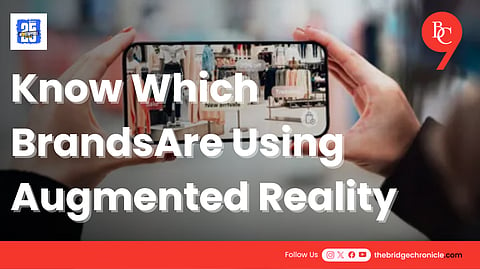

In an era where technology is rapidly evolving, Augmented Reality (AR) is emerging as a game-changer in the retail sector. Leading brands are leveraging AR to enhance customer experiences, streamline shopping processes, and drive sales. Know with TBC how top brands are utilising augmented reality to transform the retail shopping experience.
1. Gucci:
Gucci has been at the forefront of integrating AR into its retail strategy. By partnering with platforms like Instagram and Snapchat, Gucci offers virtual try-on experiences that allow customers to see how products look on them before making a purchase. This innovative approach not only enhances customer engagement but also establishes a fresh avenue for sales, making luxury more accessible to a broader audience.
2. IKEA:
IKEA's Place App is a prime example of how AR can simplify the furniture shopping experience. Customers can use their smartphones to visualise how different furniture pieces will look in their homes. By pointing their cameras at their living spaces, shoppers can place virtual furniture items and adjust sizes and colors, ensuring they make informed decisions before buying. This capability significantly reduces the likelihood of returns and enhances customer satisfaction.
3. Sephora:
Sephora’s Virtual Artist app leverages AR to allow customers to try on makeup virtually. By using their smartphone cameras, users can see how different shades of lipstick or eyeshadow look on their skin tones without applying any products physically. This interactive experience not only boosts customer confidence in their purchases but also enhances engagement with the brand.
4. Burberry:
Burberry has creatively integrated AR into its marketing campaigns by collaborating with artists to create interactive experiences for consumers. For example, users can engage with AR features that allow them to decorate their surroundings with digital art while exploring Burberry products. This unique blend of art and commerce helps Burberry connect with younger audiences and enhances brand loyalty.
5. Converse:
Converse launched an AR mobile app that allows customers to virtually try on shoes by scanning their feet with their smartphones. This technology replicates the dressing room experience remotely, building confidence in online purchases and reducing return rates due to sizing issues. By providing an engaging and fun way to shop for sneakers, Converse is redefining how consumers interact with its products.
6. Nike:
Nike has embraced AR technology through its Nike Fit feature, which allows customers to scan their feet using their smartphones to find the perfect shoe size. This innovative solution provides accurate measurements within a 2 mm margin, ensuring a better fit and reducing return rates. Additionally, Nike's virtual experiences within platforms like Nikeland on Roblox offer fans a chance to socialise and interact with the brand in immersive ways.
TBC's Insider:
The integration of augmented reality in retail is not just about enhancing customer experiences, it's also about driving sales and reducing operational costs. According to a report by Statista, the global AR market in retail is expected to reach $61 billion by 2030, highlighting the growing significance of this technology in the industry.
Retailers leveraging AR not only improve customer satisfaction but also gain valuable insights into consumer behaviour through data collected during these interactive experiences.
